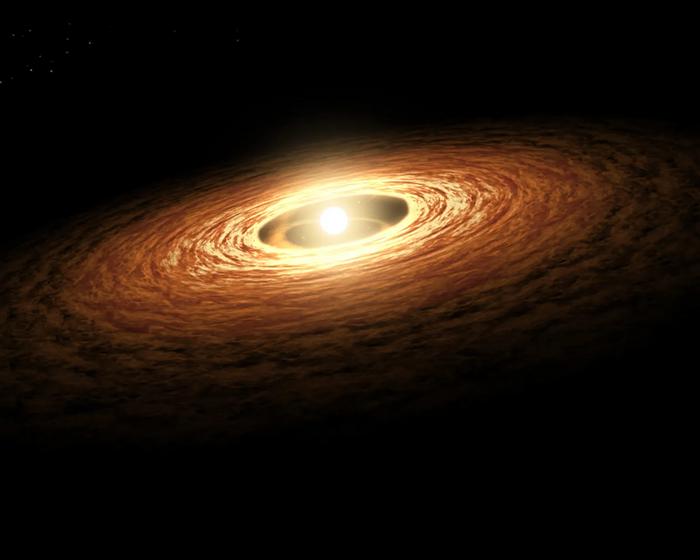An international team of astronomers has utilized the unparalleled capabilities of NASA’s James Webb Space Telescope to investigate the disk of gas and dust surrounding a young, very low-mass star, uncovering the largest number of carbon-containing molecules observed to date in such a disk. These groundbreaking findings, published in a recent study, shed light on the potential composition of planets that may form around this star and have far-reaching implications for our understanding of rocky planet formation and the chemistry of exoplanets.
Rocky planets are more likely to form around low-mass stars than gas giants, making them the most common planets orbiting the most abundant stars in our galaxy. However, little is known about the chemistry of these worlds, which may differ significantly from that of Earth. By studying the disks from which these planets form, astronomers hope to gain a better understanding of the planet formation process and the resulting planets’ compositions.
Unveiling the Richest Hydrocarbon Chemistry in a Protoplanetary Disk
In their study, the research team explored the region around a very low-mass star known as ISO-ChaI 147, a 1 to 2 million-year-old star with a mass just 0.11 times that of the Sun. Using Webb’s Mid-Infrared Instrument (MIRI), they discovered the richest hydrocarbon chemistry seen to date in a protoplanetary disk, identifying a total of 13 different carbon-bearing molecules. The team’s findings include the first detection of ethane (C2H6) outside of our solar system, as well as ethylene (C2H4), propyne (C3H4), and the methyl radical CH3.
Lead author Aditya Arabhavi of the University of Groningen in the Netherlands explained, “Webb has better sensitivity and spectral resolution than previous infrared space telescopes. These observations are not possible from Earth, because the emissions from the disk are blocked by our atmosphere.”
Implications for the Chemistry of Inner Disk and Potential Planets
The team’s results have significant implications for the chemistry of the inner disk and the planets that might form there. The abundance of carbon-rich molecules in the disk suggests that there may be little carbon left in the solid materials from which planets would form, potentially leading to the formation of carbon-poor planets, similar to Earth.
“This is profoundly different from the composition we see in disks around solar-type stars, where oxygen bearing molecules like water and carbon dioxide dominate,” added team member Inga Kamp, also of the University of Groningen. “This object establishes that these are a unique class of objects.”
The science team plans to expand their study to a larger sample of disks around very low-mass stars to develop their understanding of how common or exotic such carbon-rich terrestrial planet-forming regions are. “The expansion of our study will also allow us to better understand how these molecules can form,” explained team member and principal investigator of the MINDS program, Thomas Henning, of the Max-Planck-Institute for Astronomy in Germany.
This work also highlights the crucial need for scientists to collaborate across disciplines, as the results and accompanying data can contribute to fields such as theoretical physics, chemistry, and astrochemistry, aiding in the interpretation of the spectra and the investigation of new features in this wavelength range.
As astronomers continue to explore the mysteries of planet formation and the chemistry of exoplanets, the James Webb Space Telescope’s groundbreaking observations of the disk around ISO-ChaI 147 serve as a testament to the power of cutting-edge technology and international collaboration in advancing our understanding of the universe and our place within it.


